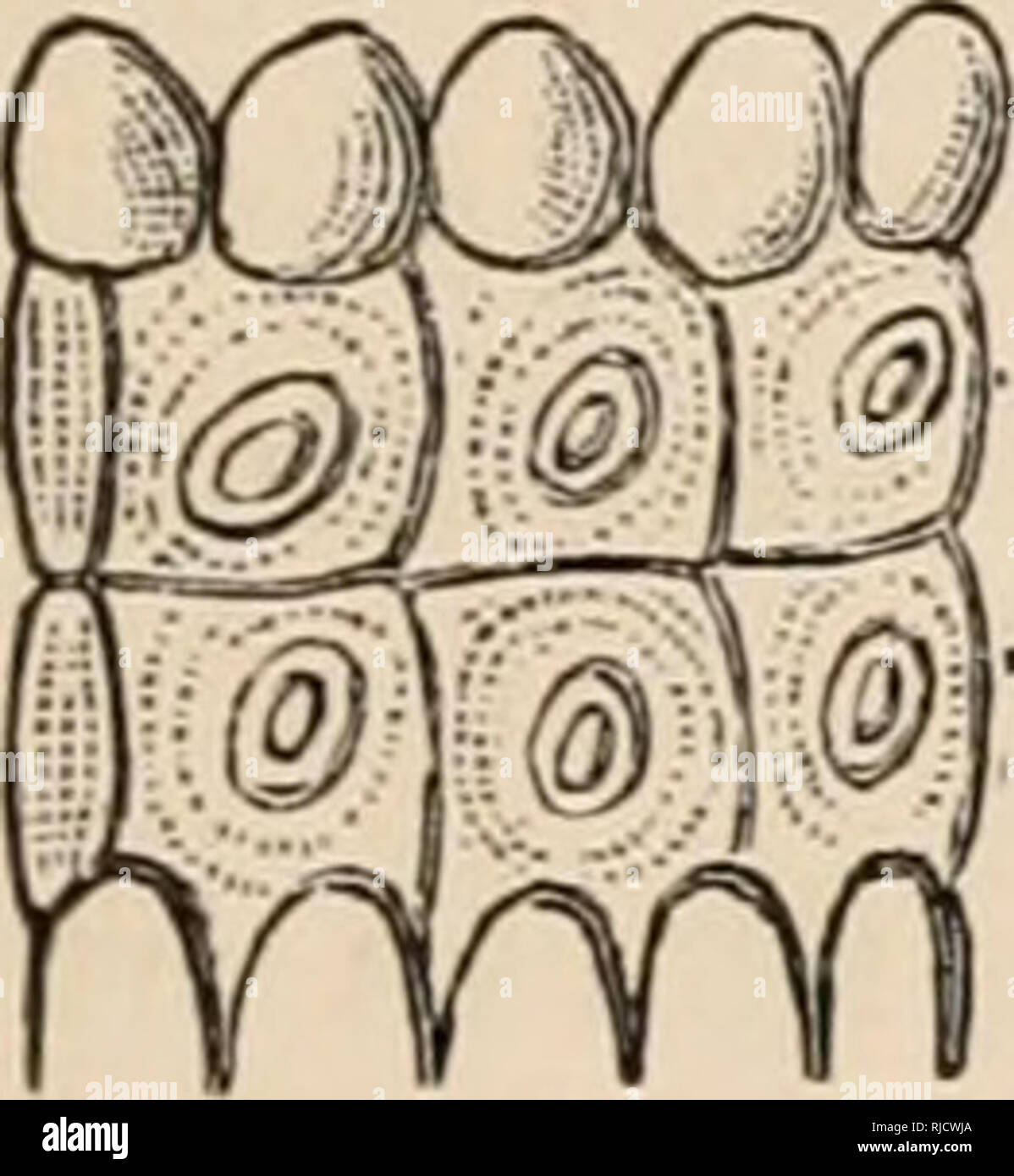. The Characeae of America. 17 stem, it gives off, by division, a complex mass of cells which comprise the basilar node of the leaf. From this node are developed the cortex cells and stipules found in Chara, the adventi- tious leaflets (which do not develop nodes like true leaves), and even organs of fructification (especially in the genus Tolypella). In the genus Nitella the basilar node of the leaf is much more sim- ple than it is in Tolypella and Chara. In Nitella only a few cells sur- round and support the base of the leaf, and these cells rarely, if ever, give rise to any organs (except t

Image details
Contributor:
Library Book Collection / Alamy Stock PhotoImage ID:
RJCWJAFile size:
7.1 MB (232 KB Compressed download)Releases:
Model - no | Property - noDo I need a release?Dimensions:
1518 x 1646 px | 25.7 x 27.9 cm | 10.1 x 11 inches | 150dpiMore information:
This image is a public domain image, which means either that copyright has expired in the image or the copyright holder has waived their copyright. Alamy charges you a fee for access to the high resolution copy of the image.
This image could have imperfections as it’s either historical or reportage.
. The Characeae of America. 17 stem, it gives off, by division, a complex mass of cells which comprise the basilar node of the leaf. From this node are developed the cortex cells and stipules found in Chara, the adventi- tious leaflets (which do not develop nodes like true leaves), and even organs of fructification (especially in the genus Tolypella). In the genus Nitella the basilar node of the leaf is much more sim- ple than it is in Tolypella and Chara. In Nitella only a few cells sur- round and support the base of the leaf, and these cells rarely, if ever, give rise to any organs (except to adventitious leaflets in some species, as in our N. clavata). There may be only a circle of four cells, or even in the same species, as in N. flexilis, an indefinite num- ber of cells may develop.. DEVELOPMENT OF THE CORTEX.—From the upper and lower por- tions of the basilar node cells arise, which extend upward and down- ward closely pressed against the central internodal cell of the stem. These cells grow, pari-passu, with the elongating stem cell, they spread laterally, and, as a rule, entirely encircle the stem and form a complete cortex. The first view of these cells is shown in Fig. 18, c and c'. A front view is shown in Fig. 19, c, which repre- $ sents the side of a young growing stem; a single cell from above and one from below ~.C cover the internode vertically, and, with the ad- jacent cells, completely encircle the stem. As the internodal cell of the stem elongates these cells Fig. I9. elongate and develop nodes and internodes, and, when fully developed, give off lateral cells. Since the leaves of successive verticils are not directly over each other, but diverge to the extent of half the distance between the leaves, the cortex cells which extend upward and downward from the base of each leaf (except that the oldest leaf of each verticil develops a shoot in its axil instead of a cortex cell, causing one cortex cell less in the encircling series which ascends from